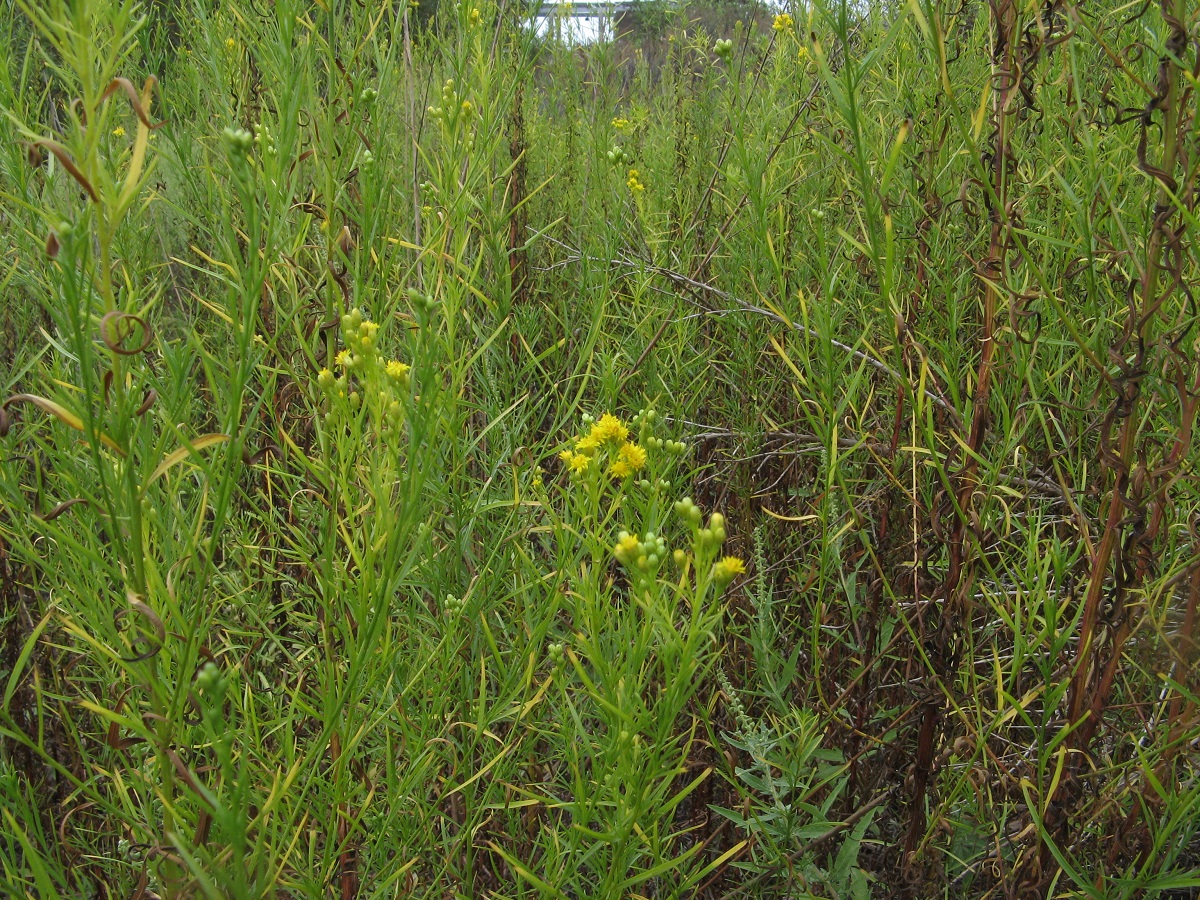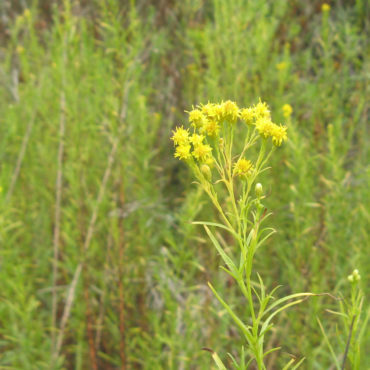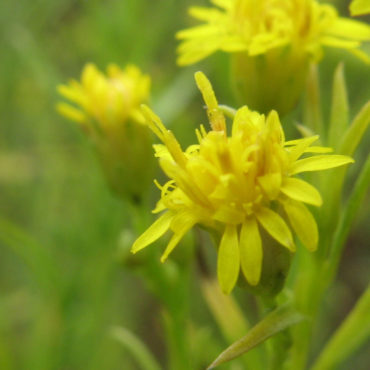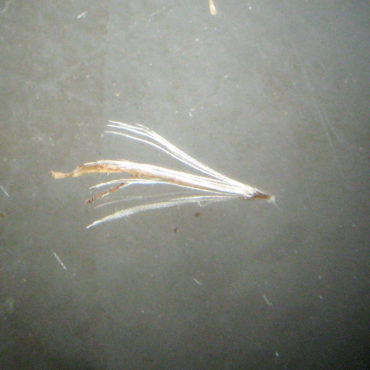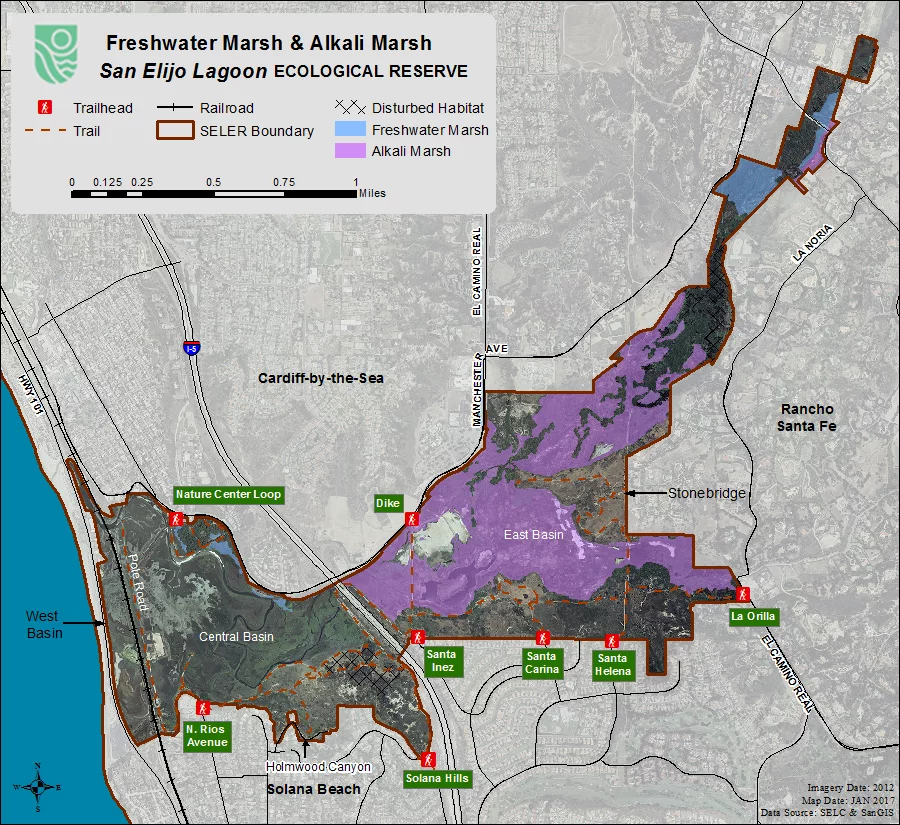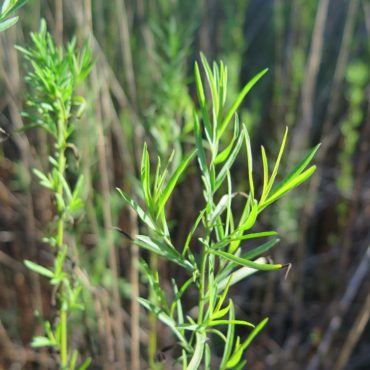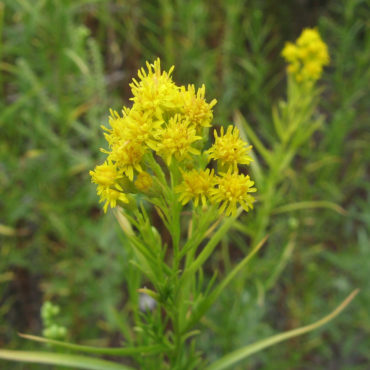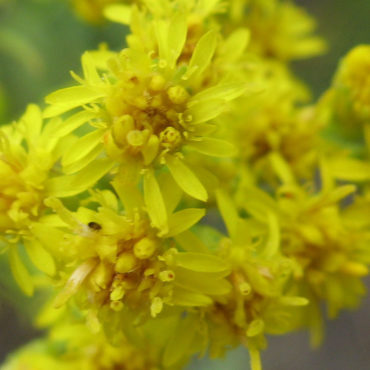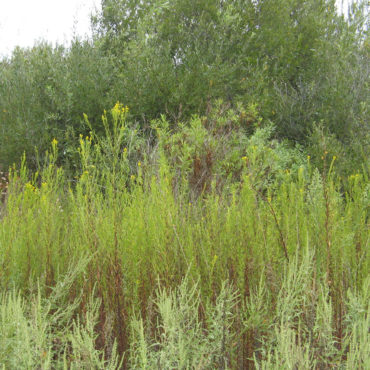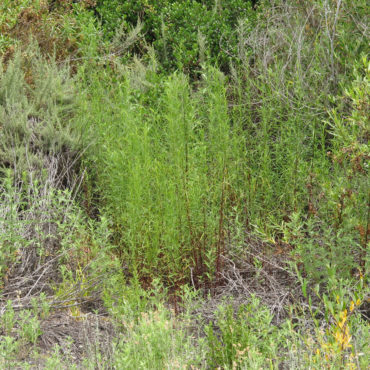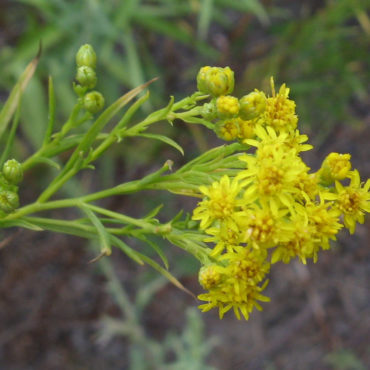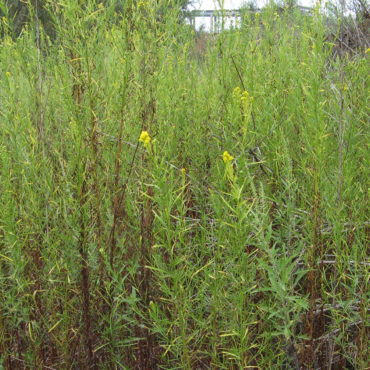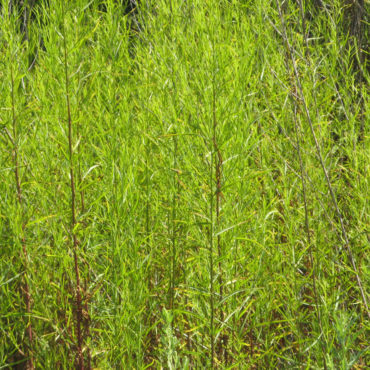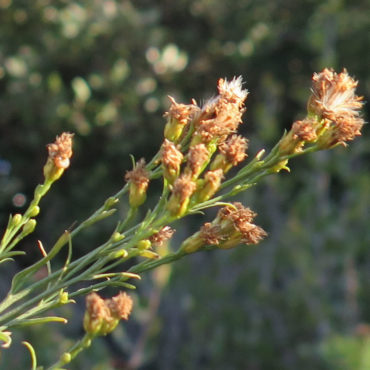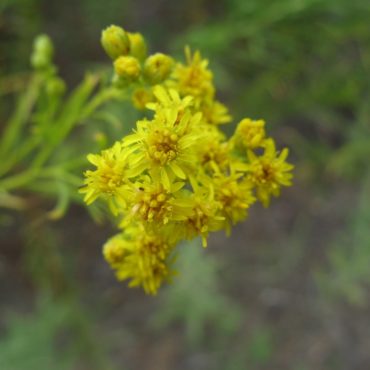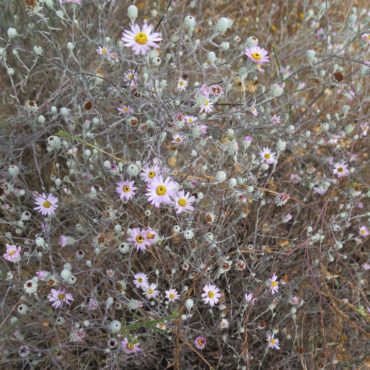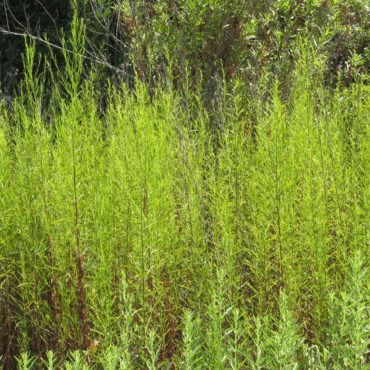In late summer, if you know just where to look along the boardwalk at the Nature Center, you may spot the golden plumes of western goldenrod (Euthamia occidentalis), peeking out between the willows and mule fat. This is one of a few species in the goldenrod tribe that has successfully moved from the east coast and midwest and found a home in California. It is the only one thus far reported from the Reserve.
Western goldenrod is a water loving species, usually found associated with lakes, marshes and stream banks, habitats not common in the Reserve. This patch is probably facilitated by the freshwater run off from the surrounding development that enters the Reserve next to the parking lot and supplies fresh water to the small riparian area.
Over the past decade, this little patch of western goldenrod has been shrinking, This may indicate a decrease in the amount of freshwater input, due either to declining rainfall or more efficient use of garden water in nearby gardens.

